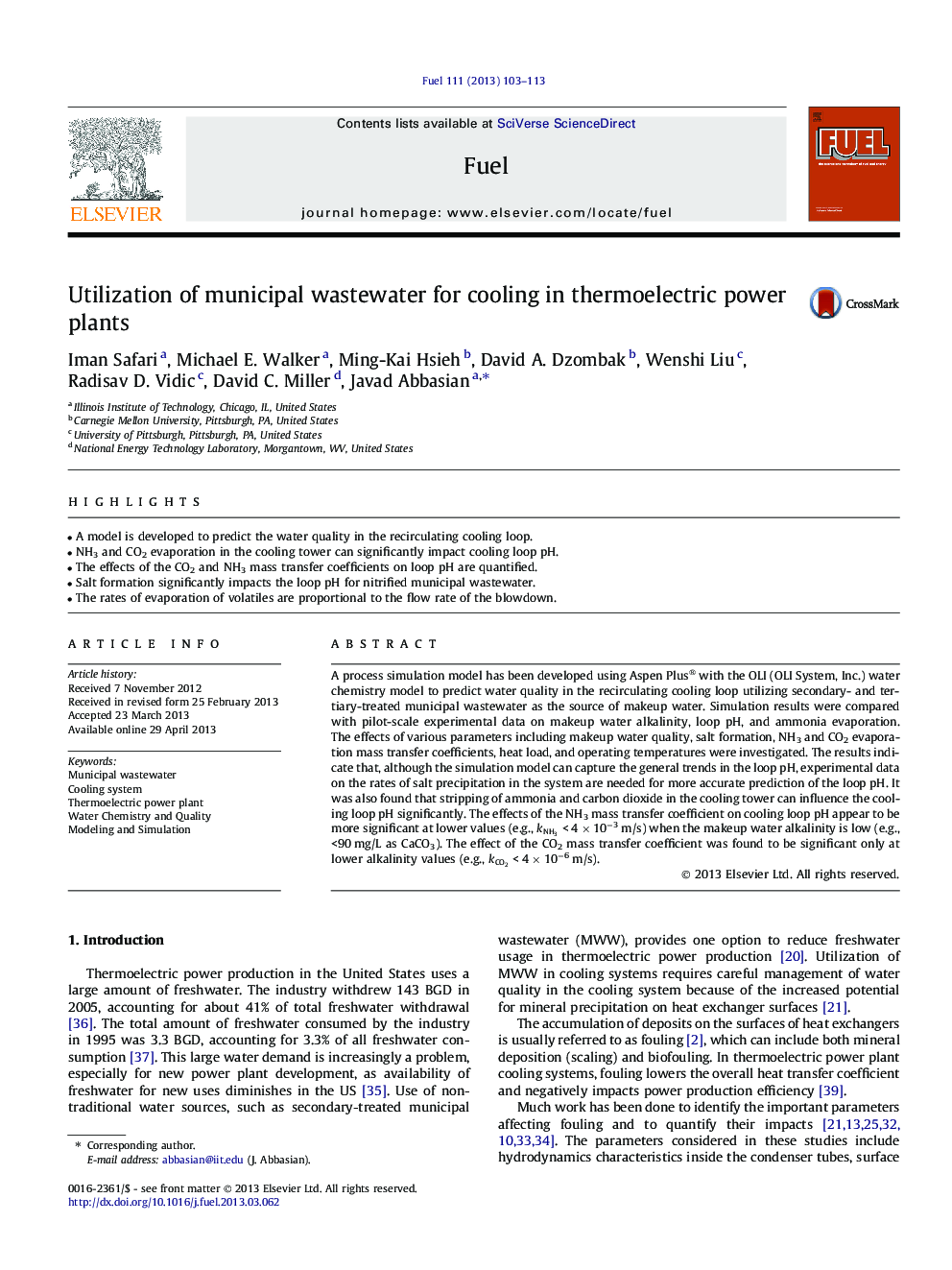| Article ID | Journal | Published Year | Pages | File Type |
|---|---|---|---|---|
| 6640253 | Fuel | 2013 | 11 Pages |
Abstract
A process simulation model has been developed using Aspen Plus® with the OLI (OLI System, Inc.) water chemistry model to predict water quality in the recirculating cooling loop utilizing secondary- and tertiary-treated municipal wastewater as the source of makeup water. Simulation results were compared with pilot-scale experimental data on makeup water alkalinity, loop pH, and ammonia evaporation. The effects of various parameters including makeup water quality, salt formation, NH3 and CO2 evaporation mass transfer coefficients, heat load, and operating temperatures were investigated. The results indicate that, although the simulation model can capture the general trends in the loop pH, experimental data on the rates of salt precipitation in the system are needed for more accurate prediction of the loop pH. It was also found that stripping of ammonia and carbon dioxide in the cooling tower can influence the cooling loop pH significantly. The effects of the NH3 mass transfer coefficient on cooling loop pH appear to be more significant at lower values (e.g., kNH3Â <Â 4Â ÃÂ 10â3Â m/s) when the makeup water alkalinity is low (e.g., <90Â mg/L as CaCO3). The effect of the CO2 mass transfer coefficient was found to be significant only at lower alkalinity values (e.g., kCO2Â <Â 4Â ÃÂ 10â6Â m/s).
Related Topics
Physical Sciences and Engineering
Chemical Engineering
Chemical Engineering (General)
Authors
Iman Safari, Michael E. Walker, Ming-Kai Hsieh, David A. Dzombak, Wenshi Liu, Radisav D. Vidic, David C. Miller, Javad Abbasian,
